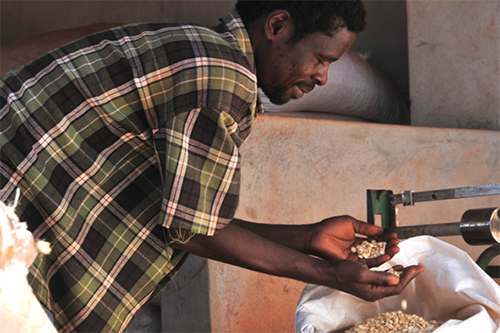 Over the years, donors and humanitarian organizations working in fragile contexts have increased their focus on promoting improved agricultural technologies, including seeds. However, quality seeds of the right varieties seldom reach smallholder farmers, especially those in remote locations. This is due to constraints on seed access, availability, and quality, all of which are more pronounced in fragile contexts where unstable operating conditions result in weak production, distribution, and seed quality control.
Over the years, donors and humanitarian organizations working in fragile contexts have increased their focus on promoting improved agricultural technologies, including seeds. However, quality seeds of the right varieties seldom reach smallholder farmers, especially those in remote locations. This is due to constraints on seed access, availability, and quality, all of which are more pronounced in fragile contexts where unstable operating conditions result in weak production, distribution, and seed quality control.
Against this backdrop, Integrated Seed Sector Development in Africa (ISSD Africa), through the Mercy Corps-led action learning activity Developing the Seed Sector in Fragile States, and the USAID Bureau for Humanitarian Assistance (BHA)-funded SCALE Award requested inspiring examples of models for strengthening last mile seed production and distribution for better seed systems resilience in fragile environments.
During the webinar, organizations presented about the following approaches:
- Seed System Resilience in Mozambique: Banking on the Green Discounts Initiative to Increase Smallholder Farmers’ Access to Seed, by the National Cooperative Business Association CLUSA International (NCBA CLUSA) through the Promotion of Conservation Agriculture Project II (PROMAC II) project in Mozambique.
- Learn more about our Green Discounts Initiative here.
- A Market-Based Approach to Strengthening Local Seeds Systems in Niger, by Catholic Relief Services (CRS) through the Girma project in Niger.
- Local Seed Multiplication in South Sudan: Building the Resilience of Host Communities and Refugee Farmers, by the International Rescue Committee (IRC) in South Sudan.
- Boosting Local Certified Seed Production in Burundi through Private Seed Sector Development, by the International Fertilizer Development Center (IFDC) through the Private Seed Sector Development (PSSD)project in Burundi.
Each organization shared their models, lessons learned and “what’s next” for their activities to encourage seed system resilience.
The event was held in English with simultaneous French interpretation. There were many interesting questions raised throughout the webinar. The presenters have taken the time to respond to them here.


